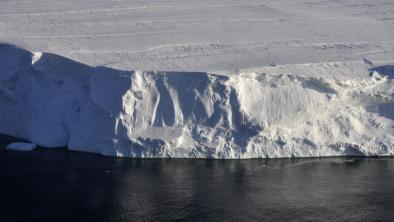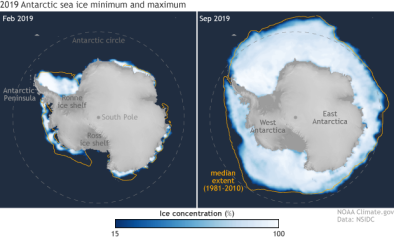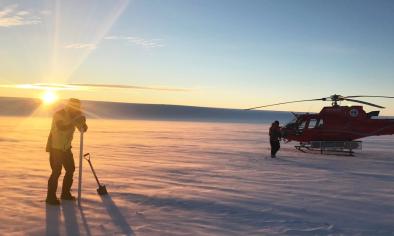The Larsen C ice shelf collapse hammers home the reality of climate change

Very soon, a large portion of an ice shelf in Antarctica will break off and collapse into the ocean. The name of the ice shelf is Larsen C; it is a major extension from of the West Antarctic ice sheet, and its health has implications for other ice in the region, and sea levels globally.
...
[I]t is important for a number of reasons. First, when an ice shelf melts or collapses, it can unpin other ice that is sitting on land, which allows it to flow more quickly into the ocean. It is this secondary effect – the loss of ice resting on land – that changes the rate of sea level rise. Loss of a major ice shelf can also activate ice that rests on bedrock topography that makes it fundamentally unstable – ice that, once moving, will move faster and faster, until a large region is afloat.
...
Perhaps a quotation from a seminal work on Antarctic ice sheets best sums up the situation. In a 1978 paper, John Mercer from the Institute of Polar studies concluded:
One of the warning signs that a dangerous warming trend is under way in Antarctica will be the breakup of ice shelves on both coasts of the Antarctic Peninsula, starting with the northernmost and extending gradually southward. These ice shelves should be regularly monitored by LANDSAT imagery.
Why is the ice shelf going to break off and collapse into the ocean? Since large calving events are so rare, and since our measurements in and around ice shelves don’t go back in time far enough, it’s hard to say whether this is a natural progression, variability, or a result of human activity (or more likely a mixture). A major reason may be human-caused warming, which has led to melting from both above and below in nearby areas. The Western Antarctic (the parts south of the U.S.) is warming quite quickly, faster than most of the planet. In addition, warmer waters can reach underneath the ice shelf and can melt it from below.
That being said, there are vigorous discussions within the scientific community about how much, if any of this can be attributed to humans. Some scientists think there is strong connection; others are much less sure and see little or no evidence that humans are the cause. From my vantage point, part of this relates to our limited ability to measure what’s going on, and part of this is a common sticking point of whether an absence of evidence is evidence of an absence.
Related Content





